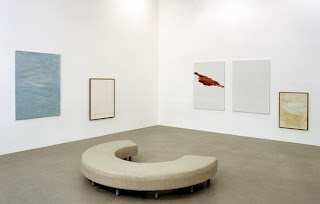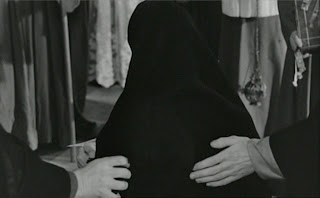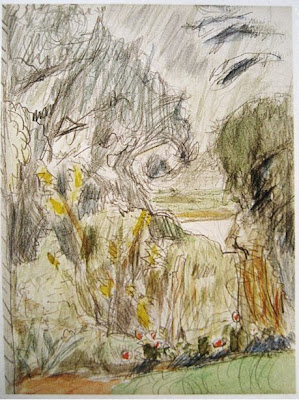

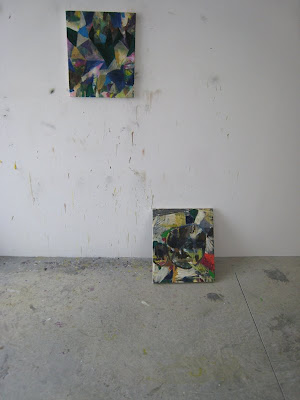

Finally, to all those who visit this blog, very best wishes for 2009!






The concert accordion. Joseph Petric. The Baroque: Rameau, Padre Antonio Soler and J.S. Bach. Countless times I have listened to these recordings. They are a marvel…a consolation. The accordion – its sound world is delicate and complex: the sound from an anonymous street corner somewhere in Paris or Buenos Aires yet like the organ can express a wide range of tonal depths (more intimately perhaps). Petric’s recording of Luciano Berio’s Sequenza XIII for accordion is a particular favourite, what journeys take place in that piece. Just the other day I read this in E.M. Cioran’s Notebooks 1957-1972:
“25 December - The sign that I like a fragment of music, that it addresses that which is deepest in me, is the desire I feel when I hear it, to turn out the light, if it is night or to close the shutters if it is day. As if I were listening in a tomb. I usually listen to Bach in this way. Bach, over the years, my most faithful companion”

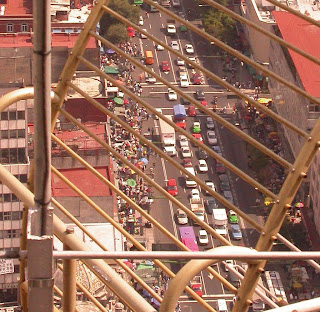
Yesterday evening, I saw for the first time “Batalla en el cielo” (Battle in heaven) a film by Mexican Director Carlos Reygadas made in 2006. Reygadas was a student of international law, specialising in “armed conflicts”, but decided to take up film making.
The film has a raw existential quality which is contrasted with a very carefully constructed visual language reminiscent of Robert Bresson in some ways but impregnated with the almost surreal reality of urban Mexico. There is no fabrication in the cinema of Reygadas; no sets, no professional actors (as in the cinema of Bresson, Pasolini and others), nothing false and no spectacle. Reygadas uses the raw material of reality itself, Mexican reality, but not as a realist. Reality, under the cinematic gaze, undergoes a transformation, a transfiguration and acquires new meanings in an increasingly dreamlike world. Reygadas has said that he wants to show the inner life of the characters in his films not through the use of actors and conventional acting “skills” but through the cinematic process itself which is used to present and emphasize the physicality of the characters and how they experience things physically. The environments in which the characters move are of equal importance and are an extension of their inner states. The plot or story is of secondary importance, a typical feature of today’s dominant commercial cinema according to Reygadas.
This film has been controversial, mostly because there are numerous explicit sex scenes. The sex is not simulated either but real. Reygadas insists that he wishes to portray sex in the same way as eating or other everyday activities. Consequently, it is stripped of any glamour or pornographic intentions. Sex as provocation is usually a facile endeavour, and though here it does have a certain logic as a ritual of communion, it remains a problematic element. Everything in this film becomes part of the cinematic texture: one scene in particular is memorable, through a window we see Ana the female protagonist straddled over Marcos, the male protagonist, engaged in the sexual act. The camera then moves slowly away and begins a 360-degree pan revealing the urban landscape, rooftops, aerials, terraces etc…finally the camera returns to the window through which we see them both again, lying on the bed after the sexual act. It is difficult to say why but there is great tension in this moment of the film. Cars, traffic jams, the metro, buildings, interiors, faces, bodies, landscapes, the Mexican national flag, a catholic pilgrimage through city streets, the Our Lady of Guadalupe basilica etc are all part of the dense fabric that is Mexico city and which through a style of contrast reflect the fractured nature of Mexican society and experience.
An interview can be found here (in spanish) with the director.
From the ground the course that a painter follows often branches out in different directions. It is only from a distance that one can see clearly how the paths might cross, join up, merge into each other or suddenly stop at a dead end. One way to navigate these
In this sense, extremism is not about transgression as such, nor necessarily the embracing of excess and decadent subjects and in my mind it is certainly not the absolutist or fundamentalist approaches to art such as so-called “radical” painting etc. Extremism is when there is the greatest tension between ones initial motivation on the one hand and all the means by which one tries to manifest this on the other (even when this runs the risk of total failure). Extremism is the ceaseless pushing of the medium and extracting what it has to offer in its most advanced manifestations. While there is always the attempt (humble rather than heroic) to come to terms with the anxiety of existence one should never underestimate pleasure in painting and the fragilty of this pleasure only makes it more poignant and serious.

